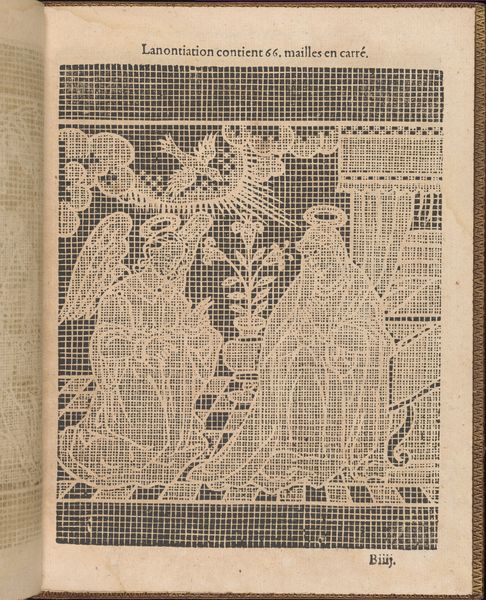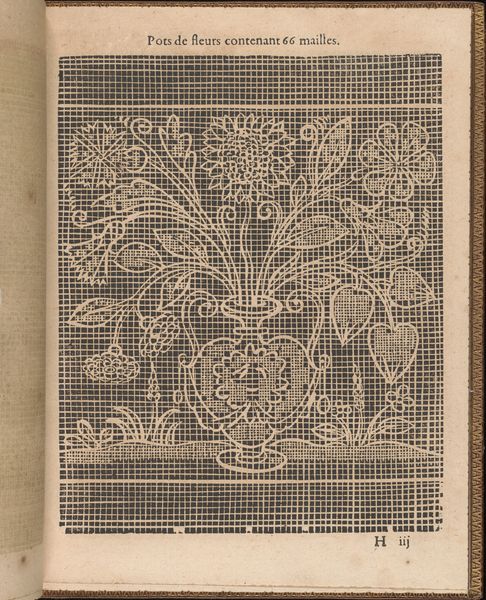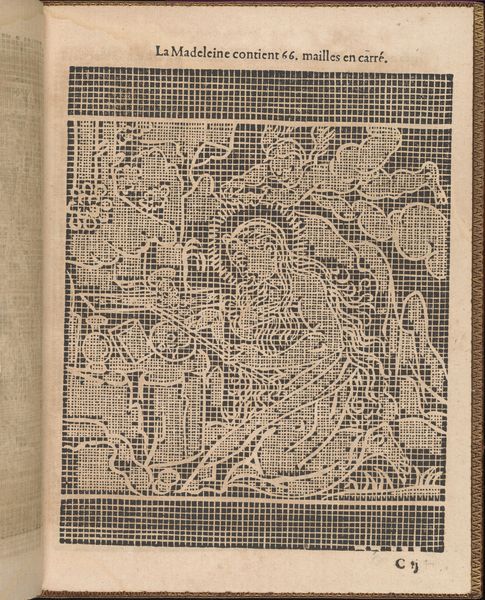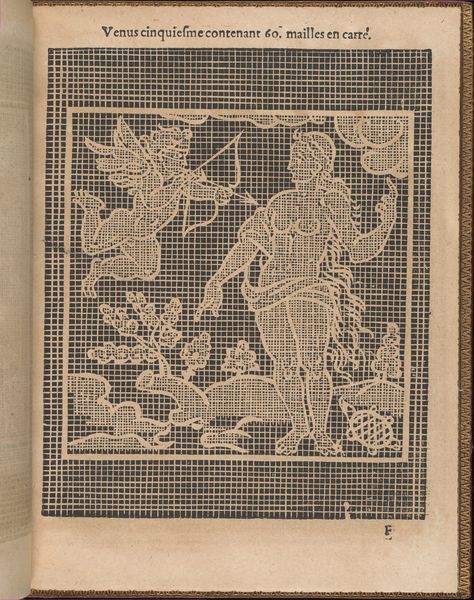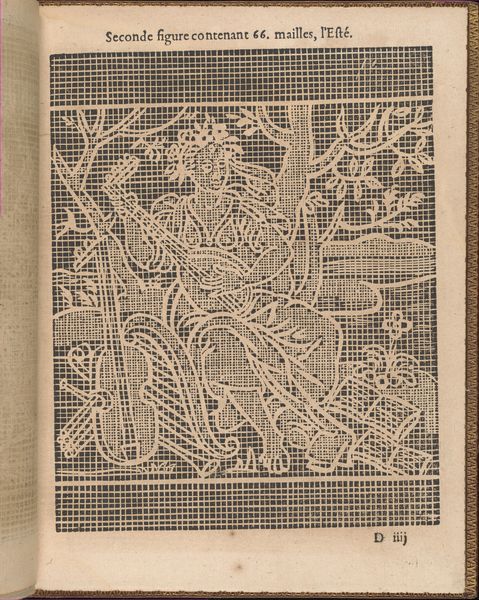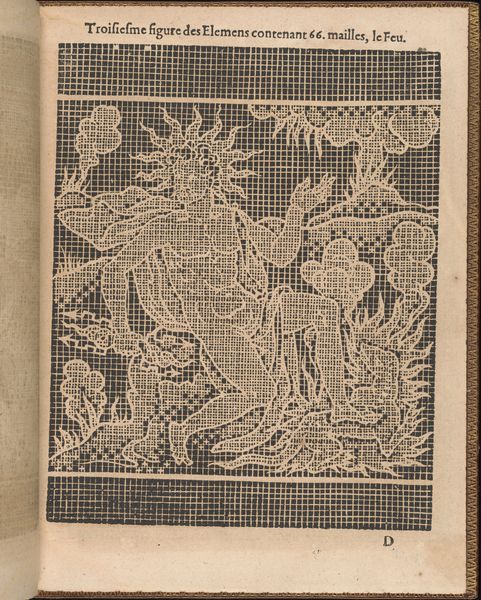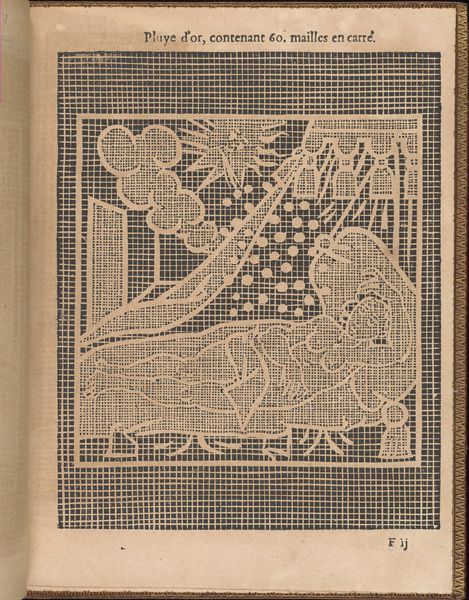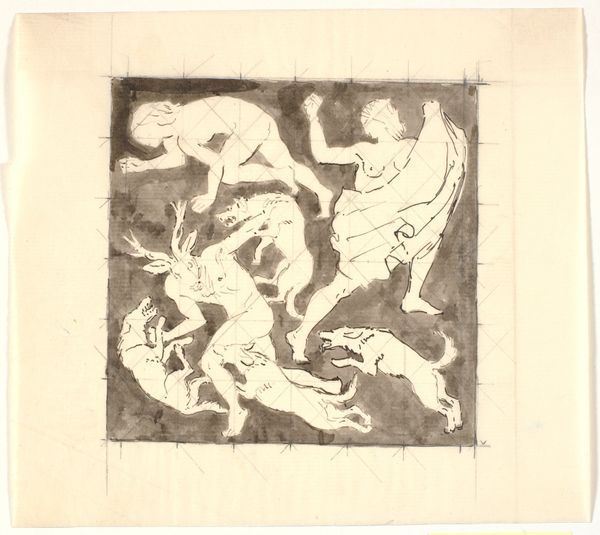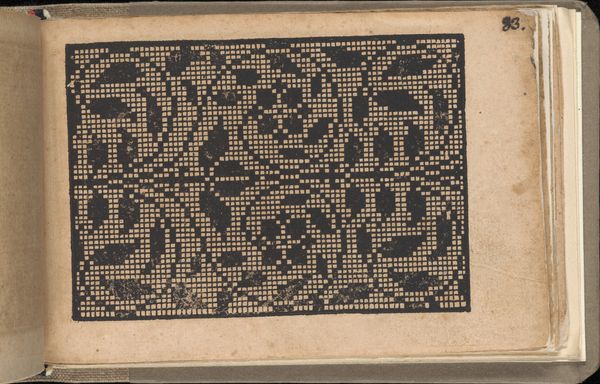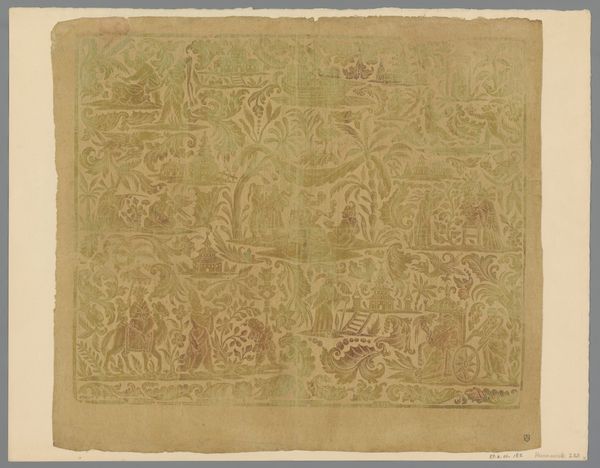
drawing, print, paper, woodcut, pen, engraving
#
drawing
#
narrative-art
# print
#
book
#
landscape
#
figuration
#
paper
#
11_renaissance
#
linocut print
#
woodcut
#
pen
#
history-painting
#
northern-renaissance
#
engraving
Dimensions: Overall: 9 1/4 x 7 1/16 in. (23.5 x 18 cm)
Copyright: Public Domain
Editor: Here we have "La Pratique de l'Aiguille, page 7 (recto)" from 1605 by Matthias Mignerak. It looks like a page from a book, rendered with woodcut or engraving, depicting Adam and Eve. The figures are so delicate, almost lace-like. How would you interpret this work? Curator: It’s fascinating to see biblical narratives translated into these intricate patterns. Remember, pattern books like this weren't just aesthetic objects; they served a real social function. Consider the context: 17th-century Europe. Needlework was a signifier of status, education, and piety, particularly for women. Does knowing this change how you view it? Editor: Absolutely! So, this isn't just about Adam and Eve, but about conveying societal values. Were these patterns strictly for the upper class? Curator: Largely, yes. The leisure time and resources required to execute these designs limited their accessibility. The patterns subtly reinforced class distinctions. Also, notice how Adam and Eve are represented – almost devoid of earthly sin; an idyllic picture tailored for a specific viewership and their values. How does this all resonate with you, given its presence now in a museum? Editor: I see it as a preserved historical document now. It makes you think about who had access to create and consume art, then and now. The museum space gives it a new context, where everyone can engage with those questions about access and the politics of art. Curator: Precisely. It reveals how cultural values and class are encoded and transmitted through visual and material culture. We’ve only scratched the surface here, but hopefully, it reveals how one image reflects deeper structures of power and representation. Editor: This has really given me a richer understanding of how to view this piece. I realize now there is a connection between these patterns, the history, and society during that time, which I appreciate. Curator: I’m glad we could peel back some layers together! Each artwork provides such a rich trove for investigation into society and politics of that time.
Comments
No comments
Be the first to comment and join the conversation on the ultimate creative platform.

